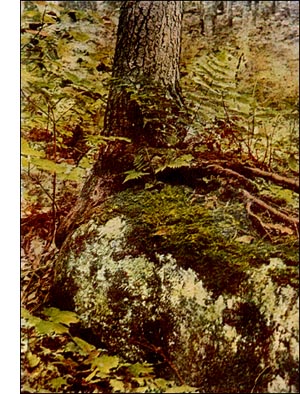Genus Brachythecium
 HYPNUM : Sub-genus BRACHYTHECIUM, Schimp,
HYPNUM : Sub-genus BRACHYTHECIUM, Schimp,The plants of this sub-genus are generally large, prostrate or creeping, forming loosely matted tufts ; the stems branch irregularly, the branchlets somewhat regularly branching again, and covered densely with leaves.
The leaves are broadly oval and oblong-lance-shaped, usually with folds lengthwise; the apex is acutely pointed, either broadly or narrowly so ; the base is heart-shaped (cordate) ; the vein is single, continuous or vanishing half-way ; the cells are usually smooth and much elongated, the alar enlarged. There are no small leaf-like organs (paraphyllia).
The spore-cases are oval or oblong, short, nodding, usually arched with a convex-conical, obtuse, or short-pointed lid ; they are borne on smooth or rough pedicels.
The generic name Brachythecium is derived from two Greek words for; short, and; a case, relating to the short spore-case.
The peristome is double, the outer teeth being united at the base, slender, lance-shaped, closely and regularly cross-barred, with a distinct median line ; the inner teeth are lance-shaped with 2 to 3 well-developed cilia all attached to a wide basal membrane.
There are one hundred and sixty-three species known at present, about forty being found in North America.
Brachythecium Novae Angliae Moss
Brachythecium Rivulare Moss
Brachythecium Starkii Moss